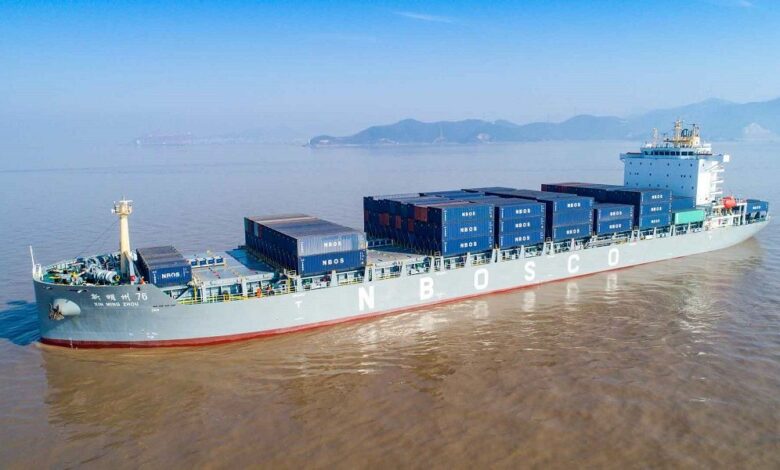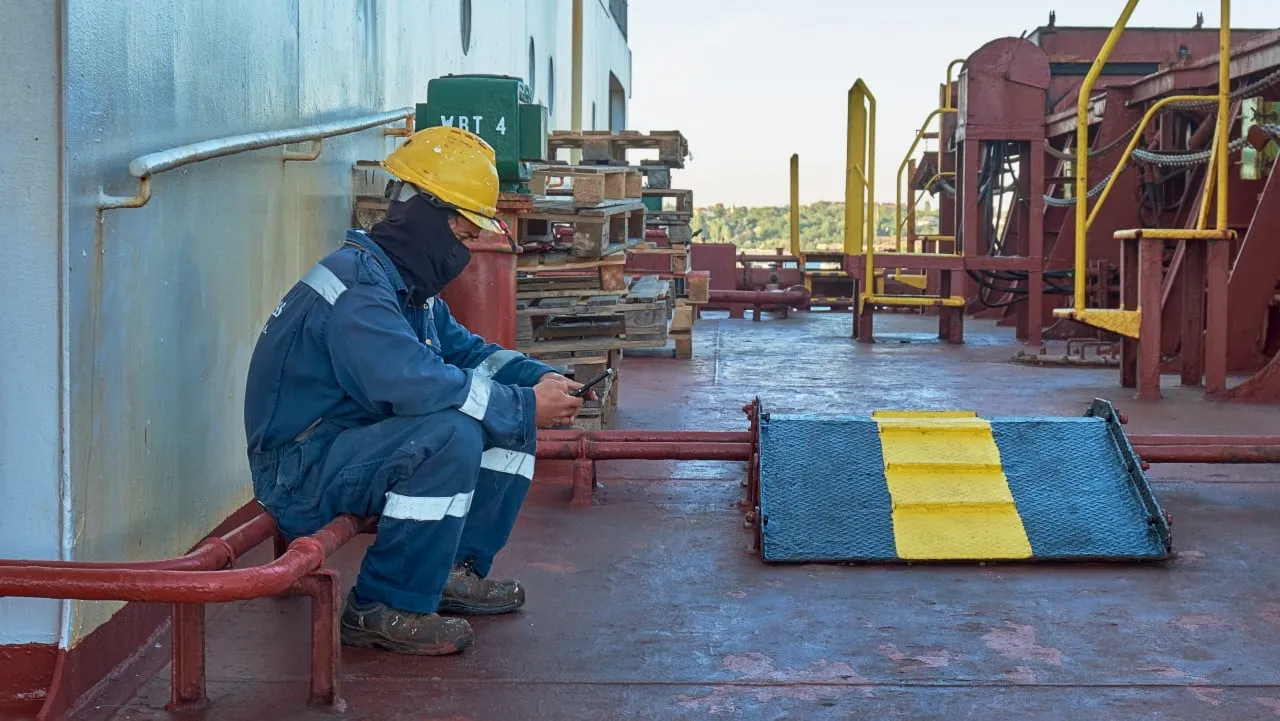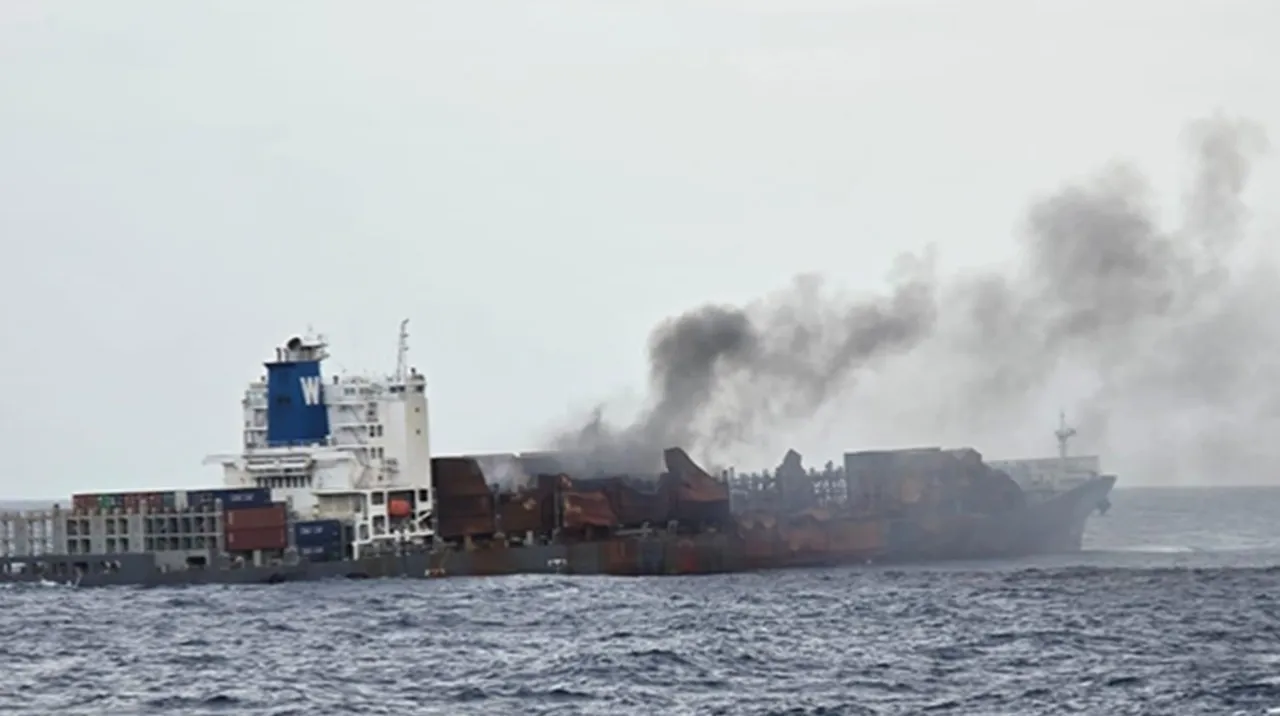Ajot: McCown: Trump tariffs may be costing the US $125 billion per month
The impact of the Trump administration tariffs could be generating a loss of $125 billion per month to the US economy, according to John McCown, publisher of the McCown Report.
In an interview with AJOT, McCown said: “$125 billion is the monthly loss to the US economy … and my latest report specifically referred to (this) …if we hypothetically had a 25% reduction in volume. And using … a figure … some academics put together in terms of the average value of a TEU of containers. So, it’s just meant to kind of underscore that you are dealing with a meaningful part of the economy.”
McCown said that he expects a considerable downturn in US port volumes for the rest of 2025 representing a decline ranging from 10% to 17.5%: “Well, I think it’s going to be negative… by some double digit amount… looking at my numbers year to date through July and superimposing the National Retail Federation (NRF) estimate, I think it’s about between a 17.5% reduction for the rest of the year and at least over 10% and it doesn’t magically end at the end of the year.”The cumulative impact will be felt throughout the US supply chain: “With reduced volume, there is going to be reduced work by dockworkers, there is going to be reduced work for truck drivers. Everybody that is involved in that supply chain of moving those goods are going to be negatively impacted.”
The McCown Report provides a monthly report on volumes generated at the ten largest ports in the United States that generate 86% of the container volumes for the nation. Those ports are located on the West Coast, East Coast and Gulf Coasts.
Tariffs May Permanently Hurt US Trade
McCown said that China is such a leading producer in so many manufacturing sectors that he does not see that the Trump tariffs will cause China serious damage: “the Chinese are now finding export markets in other parts of the world.”
It is the United States that may suffer: “And one of the uncomfortable conclusions …is that one of the unintended consequences of the Trump tariffs is to make the United States less relevant to the world trade market…”
Negative Impact on US Exports
McCown said that the tariffs have made US exports collateral damage as they become subject to countervailing tariffs from countries retaliating against the United States for imposing tariffs in 2025: “One of the ironies that I observed in the tariffs imposed from the first Trump administration was that for … about a year, it was hard to really see any real impact of those tariffs on the inbound cargo, but there was a clear effect on the outbound… at least in the first Trump administration.”
In 2025, McCown says: “My observation, again, just looking at the container box count, those tariffs didn’t do much for inbound boxes, but they hurt outbound boxes … That’s exactly the opposite of what people believe in tariffs. That’s exactly the opposite of their goal. Because exports are … more directly related to jobs in America. So, there’s no reason to think that we won’t experience at least as much, sadly, perhaps even more impact on the export side with these tariffs.
Winner and Loser Ports
McCown said: “And I think there will continue to be some macro movements that I see happening and driven by economics. And one of those, quite frankly, is there’s going to be a subtle, consistent move, probably something in the order of 50 basis points a year for goods that now go to West Coast ports, moving to East Coast ports. And that’s simply because they end up being closer to the population areas that they end up in. And all water or more water is always more economical than moving it even intermodally. So that’s a subtle effect, I think the ports that have been the biggest winners relative since recently will probably continue to be.”
Port of Houston
He says: “No other … port has … shined as much as Houston. Houston has a number of advantages going for it. One, it’s closer to the population centers. Houston’s probably benefited more than anybody in terms of a shift from the West Coast to the East or Gulf Coast.
In addition, “Houston … is managed under what is called … an operating port structure as opposed to a landlord port structure; I can see in the data a little bit more consistent growth. And I think that is simply because the operating port structure really requires much more deep knowledge of the container space.”
The landlord model is not as advantageous: “whereas the landlord structure, you are really not in the container terminal business. You are leasing your property to others that are in that. And so, that has been the traditional model, but the fastest growing ports have always really been the ones that have that operating port structure.”
Northwest Seaport Alliance — Ports of Seattle and Tacoma
McCown said that “no port has been as disadvantaged by the shift eastward probably as much as Seattle/Tacoma, because so much of that freight (traditionally went through) Seattle/Tacoma as more of a way station to go across large distances of the US. to population centers. And so again, the cost economics favor … all water.”
Port of Savannah
McCown said he is particularly impressed with the Port of Savannah: “Certain parts of the East, particularly the Southeast, have a little bit more dynamic growth … like Savannah. Savannah has been an exceptional success story over decades and … have become the model for others. Savannah was the first to realize: ‘Let’s not market to the carriers … they can change on a dime. Let’s market to the end customer … And so, Savannah smartly marketed and got distribution centers for Home Depot, Walmart, and folks like that. And once you have that, the carriers will come … that strategy is now being followed by other ports.”
USTR Fees on Chinese Ships
McCown said the US Trade Representative will be imposing fees on Chinese built and owned ships entering U.S. ports in October. Those fees will cause freight rate increases by carriers who own or operate Chinese built ships. The impact will be felt particularly on COSCO (China Ocean Shipping Company) and Marseilles, France based CMA CGM which have the largest fleet of Chinese built and owned ships: “COSCO is the fourth largest carrier in the world, but COSCO is the largest carrier in terms of Asia to West Coast. And if memory serves, I think their share is something like 16%. So that … would suggest there is going to be a striking increase in cost and rates for everybody … CMA CGM if I recall right, has something in the order of 50% of CMA CGM’s ships … built in China … I guess the most immediate effect of that would be rather sharp reduction in capacity.”
Thus, the over-all effect will be for ocean freight rates to rise: “And when that starts to happen, the most impact quite frankly in the US will be on the rate. If those ships are taken out of the US market, we could find ourselves in a bit of a capacity crunch. And we know what happens when your short capacity … rates go up. My fear is that the USTR is going to have a whole bunch of unintended consequences … that we can’t quite see now.”a
Related Posts




